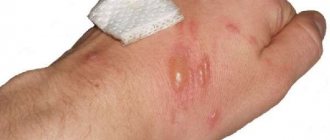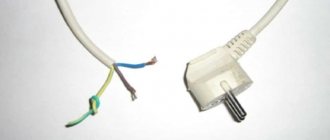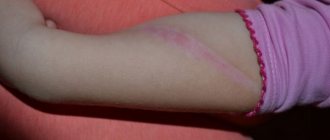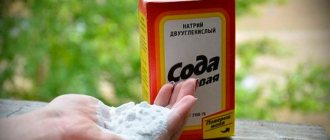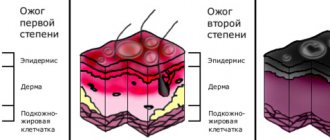Burns from boiling water, hot oil or any other hot liquids require an adequate and timely response, and if this happens, first aid should be provided immediately. Both the depth of tissue damage and the area of damage, as well as the healing period, will depend on this.
If this is a minor injury, you can provide first aid for a hand burn with boiling water yourself, but for serious injuries (3rd-4th degree burns), you should trust the doctors. Under no circumstances should the resulting blisters be opened, as this can lead to tissue infection. It is forbidden to sprinkle starch on burns, treat the wound with vegetable oil, iodine and other alcohol-containing liquids. All this can only increase pain and slow down healing. In case of particularly deep burns, when dirt and fragments of clothing have entered the wound, you should not try to clean the wound yourself, but rather wait for the doctors to arrive.
What to do if you get an oil burn?
First of all, you need to understand the extent of the damage. In domestic conditions, there is a possibility of receiving thermal burns of three degrees:
- 1st degree - the skin turns red, swelling forms at the burn site. Such damage occurs as a result of short-term exposure and heals on its own after a few days.
- 2nd degree - blisters containing clear liquid appear at the site of the oil burn. Such burns occur when oil comes in direct contact with the skin and are accompanied by swelling and redness. They are quite painful and healing can take up to several weeks.
- 3rd degree - deep burns, in which tissue necrosis and the appearance of a wet gray or dry brown scab are observed.
There is another 4th degree of burns with damage to bones, muscles, and organs. The likelihood of such serious injury from a hot oil burn at home is fortunately minimal.
How to relieve pain?
To eliminate pain from a burn, you can use any analgesic that is in the first aid kit and is suitable for the victim’s age. It is better to give preference to non-steroidal anti-inflammatory drugs, for example, nimesulide or ibuprofen. You can take analgin tablet, but it is better to refrain from using aspirin.
Pain medications should be taken only as directed and without exceeding the recommended dosage. Larger amounts of the drug will not relieve pain more effectively, but may cause a number of unpleasant side effects.
First aid
Regardless of the degree of burn received, it is necessary in any case to provide assistance to the victim. And the sooner the better.
The most important thing for a burn is to cool the damaged skin and remove hot oil from the surface so that it does not aggravate the condition.
Keep the burned part of your body under running cool water for 20 minutes. Cold will stop the spread of the burn, slow down tissue destruction and relieve inflammation.
When cooling, adhere to the following rules:
- The water temperature must be at least 150C, otherwise hypothermia may occur. This is especially true for children who quickly lose heat. Wrap the victim in a blanket while they cool the burn.
- If the victim is unconscious, a basin of water in which the injured limb can be immersed, or wrapping in a wet sheet will do.
- You can try to remove the clothes remaining at the burn site after soaking. This can only be done if it is not “welded” to the skin. Otherwise, it’s better to leave this to the doctors: otherwise you risk damaging the wound.
After cooling, cover the burn site with a sterile, damp bandage to prevent infection.
Why can't you use oil?
One of the popular “folk” first aid methods for burns is applying vegetable oil to the affected area. It was believed that such a remedy would help avoid the occurrence of rough scars. But now even schoolchildren know that under no circumstances should a fresh burn be smeared with oil. There is a very simple explanation for this.
When a burn occurs, body tissues absorb heat. By immersing your hand in cold water, you can achieve sufficient cooling of the affected area, and the burn will not spread deeper. But if you lubricate the skin with vegetable oil, a dense fatty film will appear on the body, through which heat will not pass. As a result, the residual heat from the burn will spread under the layer of oil - in the body tissues. And the burn will be even more severe.
Nevertheless, oil can still be used in the treatment of burns, but only when the wound is already healing. In such a situation, such remedies will help soften the affected area and speed up tissue regeneration.
What kind of oil burn is strong and serious?
It is necessary to assess the extent of the damage: a victim with 2nd and 3rd degree burns needs medical care. Minor 1st degree burns and small 2nd degree oil burns can be treated at home.
A burn is considered significant if it occupies more than 10% of the total body area. You can determine the size using the “rule of the palm” or the “rule of nines”.
In the first case, the unit of measurement is the palm, the size of which is equal to 1% of the total body area. So, a burn that takes up 10 palms, or several scattered burns the size of a palm, is serious.
According to the “rule of nines,” different parts of our body occupy an area that is a multiple of nine (as a percentage of the total area of the body). If any limb is injured, for example, a hand was burned with oil, then it is easier to determine the severity of the injury in this way:
- Chest and back – 18% each;
- Legs – 36% (18% each);
- Head and neck – 9%;
- Hands – 18% (9% each).
Degree of skin damage
- 1st degree burns are the mildest. Redness, burning and swelling appear on the injured limb. Such an injury can be treated independently at home.
- In grade 2, blisters form on the burned area. There is a clear liquid inside them. The person feels burning pain. If the oil damages a fairly large area, then loss of consciousness may occur due to pain. The first measures are carried out at home, after which it is recommended to contact the nearest medical and preventive institution.
- Grade 3 injuries are the most severe. When burned by hot oil, it burns through the top layer of skin and affects the subcutaneous fatty soft tissue. Severe damage to blood circulation in the vessels occurs and the metabolic process of nerve endings is disrupted. After a few days, soft tissue necrosis begins. This condition is characterized by profuse purulent discharge, which is accompanied by blood clots. Post-burn therapy is carried out by a highly specialized doctor. Sometimes surgery is required.
Grade 4 is characterized by damage to soft muscles and bones. Such injuries are typical in production.
When to call an ambulance
- A child, an elderly person, a pregnant woman or a seriously ill person was burned.
- 3rd degree burn
- A 2nd degree burn covering an area of more than 1 palm of the victim.
- 1st degree burn over 10% of the body surface.
- Received an oil burn on the face, head, groin area, joints, hands, and feet.
- The victim feels very unwell or is unconscious.
While waiting for an ambulance, you should stay close to the victim at all times and give him something to drink. In case of severe pain, the victim can take a painkiller if he does not have allergies.
If you notice that the burn site begins to swell, try to place the burned part of the body above the level of the heart and check the bandage. A bandage that is too tight should be loosened to improve blood circulation.
What is not recommended to do
- Remove stuck clothes.
- Pop the bubbles that appear from the oil burn yourself.
- Bandage the burn tightly.
- Apply oil, sour cream, kefir to the burn site: you have just cleaned the burn from the oily environment, so you should not introduce microorganisms into it that can cause the development of infection.
How to treat a burn from boiling oil
The healing time depends on how timely and correctly first aid was provided, as well as on the further actions of doctors and the victim.
- 1st degree burns can be treated at home. If you quickly cool the damage and immediately apply Panthenol or Olazol, the recovery time will be reduced to 3-4 days. However, it makes sense to use these anti-burn agents only before blisters form. For 2nd degree burns this is no longer effective.
- Small 2nd degree oil burns can also be treated independently with outpatient medical supervision. The fact is that the blisters that appear from an oil burn contain liquid (exudate), which means an inflammatory process. Blisters will not resolve on their own; they need to burst for the burn to heal.
Only a physician can do this under sterile conditions, leaving the skin to protect the burn site from infection. The burn can then be treated at home.
Healing may take several weeks and, with proper care, will not leave scars.
It is important to remember that the skin formed at the burn site is especially thin and needs additional protection. Therefore, during and after healing, it is recommended to lubricate it with emollients and moisturizers. La-Cri cream is perfect for these purposes.
La-Cri cosmetics are sold only in pharmacies. It does not contain preservatives, hormones or fragrances. The cream contains only natural ingredients that have a truly miraculous effect:
- Seed and licorice extracts relieve inflammation;
- Violet extract and bisabolol (the active ingredient of chamomile) soothe delicate skin;
- Panthenol and avocado oil have a regenerating and softening effect, nourish and moisturize the skin;
- Walnut extract fights germs and promotes rapid healing.
If you are looking for something to anoint an oil burn, La Cree Revitalizing Cream is perfect for this purpose.
How to avoid household burns
To prevent oil burns, you must follow safety precautions when preparing and heating food:
- wear a protective apron;
- pour oil exclusively into a dry, hot frying pan;
- carefully lower the food into the frying container using a slotted spoon;
- do not throw large pieces from a distance;
- if you need to clean the frying pan from burnt oil, you need to wait until it cools down;
- keep the oil bottle away from gas burners;
- Keep children away from the stove while cooking.
Oil burns are painful and sometimes take a long time to heal. Therefore, it is important to follow safety precautions. If trouble does occur, timely first aid will shorten the healing time and prevent the development of complications.
Folk remedies for oil burns
SOS tools
Can be used immediately after cooling the burn to relieve symptoms. Suitable only for 1st degree burns without blisters or wounds!
- Fresh potatoes: grate, place on gauze or bandage and apply as a compress to the burn. Instead of potatoes, you can use carrots or add cabbage leaves.
- Tea brewing: brew a bag and cool to 13-150C. Dip gauze into the tea leaves and apply to the burn site. Excellent for relieving swelling.
- Aloe leaves: wash the aloe leaf thoroughly, cut lengthwise and apply to the burn site. You can also rub aloe and squeeze the juice out of the leaves to make a compress.
What else should you not put on burns?
Some folk remedies do not speed up the healing of burns, but provoke complications. To prevent this, wound treatment is prohibited:
- egg white;
- pumpkin juice;
- potato starch;
- kefir;
- homemade yogurt;
- urine;
- chopped white cabbage;
- grated burdock root.
Fermented milk products and chicken eggs create a nutrient-rich environment for bacteria. This often leads to purulent inflammation of the wound. Therefore, such drugs are not used to treat even superficial burns without blisters.
Treatments for healed burns
Used to treat 2nd degree burns after the blisters have healed.
- Fir and sea buckthorn oils: mix in equal parts and smear the burn area until completely healed. Perfectly soften the skin and prevent the formation of scars.
- St. John's wort herb: pour half a glass of St. John's wort herb into 1 glass of vegetable oil and leave for 21 days in a cool place without access to light. Then strain and lubricate the burn site several times a day.
- Dairy products: 1 tbsp. mix a spoonful of vegetable oil with 2 tbsp. spoons of sour cream and 1 egg yolk. Apply the mixture to damaged skin and cover with a bandage. Change 5 times a day.
Sources:
- Yukhtina N.V., Modern ideas about atopic dermatitis in children
- Kamasheva G.R., Khakimova R.F. Valiullina S.A., Methods for assessing the severity of atopic dermatitis in young children, Dermatology journal, 2010
- Kovyazina N.A., Fedosimova N.A., Illek Ya. Yu. Diagnosis of atopic dermatitis in young children, Vyatka Medical Bulletin, 2007
Peculiarities
The danger of burns from hot oil is due to its physical properties. Oils:
- boil at high temperatures (olive oil - at 180° C, and peeled sunflower oil - at 260° C);
- characterized by high heat transfer due to the high density of the liquid;
- getting on the skin, they form a film on its surface that prevents the natural cooling of burned tissues.
Contact of even a small amount of boiling oily substance on the skin can cause severe burns with damage to the deep layers of the dermis.
Fir water
This water is prepared by dripping 3...5 drops into a glass of water. fir oil. The resulting liquid is used for rinsing during morning and evening hygiene. To feel the result, you need to rinse for 3…4 weeks.
Fir water should be used as a preventive measure to strengthen teeth and gums. Usually they rinse their mouth with it after brushing their teeth - in the morning, in the evening. Fir water should be kept in your mouth for about 5 minutes. It is worth doing courses of such rinses, which should be 20...25.
Medicinal properties of fir oil
Thanks to its rich composition, fir oil is one of the best natural remedies that can help the human body fight various ailments:
- it helps the skin regenerate after damage or injury;
- it affects the general condition of the body, improving its tone;
- it quickly strengthens defense systems and helps improve immunity;
- it blocks the development of pathogenic microorganisms;
- it reduces pain in most diseases;
- it improves the functioning of the prostate gland in men and the ovaries in women;
- it allows you to quickly cleanse the lungs and bronchi of the mucus that accumulates in them during colds;
- it humiliates or completely blocks the manifestations of intoxication;
- it, when used regularly, minimizes colds in humans;
- it calms the nervous system, allowing you to effectively resist stress;
- it has a relaxing effect on the muscles;
- it is an excellent remedy for fatigue.
All of the above was known a long time ago, even in the time of Hippocrates, among the people who inhabited Ancient Rus'. Today it is confirmed by official medicine and is used in practice.
Fir oil has long been considered by healers and doctors as an excellent analgesic, anti-inflammatory, antiseptic, bactericidal, and disinfectant. When consumed, it strengthens the human body, tones it and calms it.
The oil is often recommended as a prophylactic to prevent various conditions of the body. They cure lung diseases; it gives amazing results for acute respiratory viral infections, bronchitis, bronchial asthma, and influenza. Taking the oil helps fight pneumonia, an infection that inflames the upper respiratory tract. At the same time, the drug makes the patient less irritable, calms him, and helps remove accumulated mucus from the body.
The presence of phytoncides and provitamins in the oil leads to the strengthening of the body's defense systems. The beneficial effect of the drug on hypothermic and frostbitten tissues has long been noticed. Its analgesic properties help treat gout, rheumatism, osteochondrosis, neuralgia, arthrosis, and neuritis. By reducing pain, the oil simultaneously reduces swelling resulting from diseases.
The effect of fir oil on blood vessels and the heart has been noticed. Its use leads to a narrowing of the former and an increase in myocardial contractility. Its ability to restore impaired blood flow and raise blood pressure when it is low. The oil is used as an additional remedy for urological and gynecological problems.
With the help of fir oil, the central nervous system is quickly and effectively normalized. People get rid of stress and chronic fatigue. They stop suffering from neuroses and insomnia; Their sleep is normalized, their tone rises, and the lost state of peace and harmony appears.
How to treat further if you are burned
In most cases, burns are treated at home. To ensure that the injury heals faster and serious scars do not form, it is recommended to follow the recommendations of the attending physician, regularly change the bandages, avoid mechanical damage and lubricate the area with medications.
As a rule, the recovery time for first-degree burns does not exceed one week. If small blisters appear, treatment lasts for two weeks.
General recommendations
Each injury received can undermine a person’s health. By adhering to some rules, you can avoid complications and speed up recovery time:
- Drinking plenty of fluids promotes rapid skin regeneration.
- Balanced diet. During the healing period, it is recommended to give preference to foods of plant origin. Add unprocessed oil to vegetable salads. These products will increase skin elasticity.
- Alcohol consumption slows down the regeneration of soft tissues.
- You should not refuse to take a shower and protect your injury from getting wet. Microbes are washed off under running water. After showering, gently pat the sore skin dry.
- Protect the wound when working with contaminants.
If the wound is large, doctors often recommend taking a vitamin complex.
What to apply from medicines
There is a large selection of medications in pharmacies and choosing a remedy can be difficult. However, we can highlight several remedies that have proven themselves and have proven effective over many years of use by victims:
- Panthenol spray - this drug starts metabolic processes in skin cells and promotes rapid healing. The main active ingredient is dexpanthenol. It has an anti-inflammatory effect. Treatment is carried out 3 times a day.
- Olazol is made from several components - benzocaine (painkiller), sea buckthorn oil (softening and regenerating), chloramphenicol (antibiotic), and boric acid (antiseptic). It relieves pain and prevents infection.
- Solcoseryl starts the regeneration process, activating the processes of cell division and collagen production.
- Bepanten-plus will prevent the entry of pathogenic microbes and speed up healing.
- Lioxazine gel helps improve microcirculation, relieves vascular spasm, and has an analgesic and antimicrobial component.
- Guardian, Rescuer, Healer , etc. Such medicines contain natural ingredients that help to quickly cure first-degree burns.
- Stelanine is an ointment for burns. It starts the regeneration process. Iodine is added to it as a bactericidal component. The medicine is prescribed to patients for the treatment of burns of the first or second degree of complexity.
Medications
If you have a first or second degree burn, the basis of treatment is regular treatment of the wound with an antiseptic solution. This may be Miramistin or Chlorhexidine. Dressings are carried out at least 2-3 times during the day.
To speed up healing, it is permissible to use anti-burn agents. It is better if it is mousse or foam - they do not require tactile contact, which will avoid pain and discomfort during application.
Among the most trusted preparations for anointing a burn with oil:
- Panthenol;
- Levomekol;
- Olazol.
In the second degree, a traumatologist may recommend the use of an antimicrobial gel, namely Fuzimet, Fusiderm, after drying the skin.
Treatment of 3rd degree burns is recommended in a hospital setting.
Surgical and cosmetic procedures
A burn may leave scars or welts. To eliminate them, you can resort to a cosmetic treatment method:
- physiotherapy;
- hormone therapy;
- laser or diamond grinding;
- chemical peeling.
Cosmetology is considered a conservative method of treatment. If it was not effective, then surgery is recommended. During the operation, scar tissue and a deformed area of skin are excised and a cosmetic suture is applied.
Is it possible to use folk remedies?
Despite the fact that traditional medicine has gone far ahead, traditional methods of treatment are found in everyday life. Doctors are quite skeptical about them, and some even say a categorical “no” to their patients.
Cabbage leaf will eliminate pain, relieve swelling and speed up healing.
They explain this by saying that pathogenic organisms can get into an open wound and cause inflammation. Nevertheless, many methods have proven their effectiveness for many centuries.
Traditional methods
If at the time of injury there is no possibility of using medications, then you can resort to alternative medicine:
- Aloe is a houseplant that has long been known for its medicinal properties. It is necessary to cut off the leaf and cut it along the plate. First, wash the wound with the juice, and then apply the soft jelly-like part of it to the burn site. As an alternative, you can grind the leaf to a mushy state and make compresses from it.
- Potatoes or pumpkin will help relieve pain and relieve swelling. Raw vegetables are grated and applied to the injury. To speed up regeneration processes and as an antiseptic, you can add a drop of honey. The compress is kept for 2-3 hours, after which the remains are removed with a soft, damp cloth.
- You can treat an oil burn with Egg Ointment, which is prepared from the yolk beaten with two tablespoons of sour cream. It is applied to the skin, and after drying, the excess is removed with a damp cloth. The procedure must be repeated 2 times a day.
- Cabbage leaf will eliminate pain, relieve swelling and speed up healing. A white cabbage leaf is crushed and mixed with egg white. Renew the bandage regularly and within a day the result will be noticeable.
- Oak bark decoction is rich in tannins, which promote rapid tissue regeneration. One tablespoon of bark is immersed in 100 ml of boiling water and simmered over low heat for 10 minutes. Then the resulting liquid is cooled to room temperature. They use it to wash burns and make lotions.
Attention! You may be advised to apply oil to the burn. However, this cannot be done. The fact is that when absorbed into the skin, it leaves an invisible thin, but at the same time dense film. It interferes with the natural cooling of the skin. Moreover, the residual heat from the burn will spread through the soft tissues, causing severe pain.
It is important to take into account that all traditional medicine is used only if it is not possible to go to a medical center or buy medicine. Drug treatment cannot be completely excluded, but methods can be used in combination.
Properties of fir oil
The oil contains cineole, borneol, n-cymene, sabinene, y-bisabolene, 3-carene, α-phenchene, α-thujene, santhene, camphene, β- and α-penenes, terpinolene, y- and α-terpinenes, dipentene, limonene, trans- and cis-β-ocimene, myrcene.
One of the most significant components in fir oil is bornyl acetate. This substance has a complex composition, which contains acetic acid and borneol. In addition, the oil is rich in other components, among which the following are isolated and most studied for their effect on the body:
- tannins: give the oil anti-inflammatory properties, promote a vasoconstrictor effect on the intestinal wall, and the growth of pathogenic microorganisms; used by the pharmaceutical industry in the production of drugs that help fight poisoning;
- carotene: known for its protective functions, preventing the destruction of cell walls by free radicals; promotes rapid restoration of the epithelium; does not allow the sun's rays to have a directly harmful effect on the skin; thanks to it, the body better fights tumors; this substance provides a person with “night” vision;
- Vitamin C: is the most powerful antioxidant known; has a positive effect on the functioning of the internal glands, reducing the reproduction of cholesterol and pigment substances; directly affects the state of the immune system, helps the body fight allergic influences;
- tocopherols: have an antioxidant effect; have an effect on metabolic processes at the tissue level, make capillaries more elastic, restore reproductive function, and help reduce the size of atherosclerotic plaques.
This list of properties of fir oil is not exhaustive. It contains other substances that also have a beneficial effect on the human body and its condition.
Consequences and prevention
Complications from a chemical burn can be serious. With extensive damage, a person faces painful shock and death. Contact of the substance with mucous membranes will cause serious damage. If it gets into the eyes, the victim is at risk of blindness.
Since gasoline vapors are explosive, you need to remember safety precautions when working with it. It is required to store gasoline in appropriate containers in a ventilated, ventilated area. Since hydrocarbons accumulate in pits (garage basement), the flammable substance should not be stored there.
When working with gasoline, wear protective clothing, shoes, gloves, a mask and goggles. This will help avoid contact with skin and, accordingly, burns.
Damage to the skin due to contact with gasoline and its vapors is rare, but causes serious complications. The danger is that symptoms do not appear immediately and the substance continues to have harmful effects. If a gasoline burn is suspected, the victim is given first aid and hospitalized to clarify the diagnosis.

